What is an Athlete?
What makes a good athlete? The Google definition is a person proficient in sports and other forms of physical exercise.
Proficient in sports and other forms of physical exercise is an easy enough interpretation. So the question becomes, who are the best athletes?
As Americans, we often associate athletes with people who are the tallest, fastest, and strongest. In essence, we view the best athletes as chiseled, immortal beings. Unless you look like a Greek God, you certainly can’t be athletic.
But this interpretation of an athlete is pretty narrow. If we go by this, professionals like Nikola Jokić and CC Sabathia wouldn’t be considered good athletes. Jokić, a three-time NBA MVP, recorded the lowest-ever vertical leap at the NBA combine at 17 inches. Sabathia, a likely first-ballot Hall of Famer, famously had a bit of a gut on him—especially towards the end of his career.
There is no debate about which athletes were blessed with physical attributes. Basketball players are the tallest. Football players are the strongest. Short-distance track athletes are the fastest. Long-distance runners have the most stamina. Baseball players can throw a ball the hardest.
There’s a reason certain athletes with physical attributes end up excelling in the sports they choose to pursue. As Paul Harvey, writer of American Soccer Analysis eloquently describes, there is a phenomenon called evolutionary (or selective) pressure. In nature, animals adapt to their environmental conditions. The same is true in sports. As Harvey writes:
“Put simply, selective pressure is why marathon runners don’t look like offensive linemen.”

Andre Smith, a former NFL offensive lineman, wouldn’t stand a chance to win a marathon, let alone finish. And Eliud Kipchoge, the 2020 Olympic marathon gold medalist, would be as flat as a pancake trying to block for a quarterback. However, both should be considered amazing athletes despite the likelihood of failing miserably at each other's sport.
This is why the way we Americans currently define an athlete is wrong. Instead of focusing on physical attributes, we should look at the skills to become proficient at a sport.
What Makes a Soccer Player?
Every time the US Men’s National Team plays in a major soccer tournament, we get sound bites and social media threads asking, “Would the US win [insert major tournament here] if our ‘best athletes’ played soccer?”
The answer among the general sports media and keyboard warriors is almost always, “Yes.”
As a former, half-decent soccer player, I always found this argument laughable and slightly offensive. I tried my best to remove my bias and look into what makes a player world-class. From there I wanted to see if professional athletes from other sports would be suited to perform at the highest levels with a ball at their feet.
Ball Skills, Quickness, & Agility
In soccer, a player’s success requires individual skills over physical attributes. Sure, being taller can help win balls in the air. Being stronger can help shield opponents from the ball. And being faster can help wingers run by opponents. But none of this matters unless you have ball skills—you won’t see the field if you don’t.
Can you control a pass from a teammate from 40 yards away as easily as catching a feather? Can you avoid multiple defenders in tight spaces while not losing the ball? Can you shoot on your first touch from 18 yards out and place it just out of reach of the goalkeeper? Can you dribble past someone?
Just last year, the average height of the Premier League, often cited as the best league in the world, was just under 6' 0". Defenders and goalkeepers tend to make up the taller players, which makes sense given they are required to win balls in the air and are usually less technical.
For comparison, the average height of an NBA player last year was 6' 6" and the average height of an NFL player last year was just over 6' 2".
There is a reason you don’t see many soccer players on the field who are taller than 6' 3". In general, being shorter gives people a lower center of gravity, which helps with balance. Ball skills such as dribbling and quickly pivoting in different directions, can be the difference between keeping and losing the ball.
Being shorter is also ideal for the short bursts of speed and quick changes in direction required during a game. Quickness, agility, and the ability to make split-second decisions with the ball at your feet are requirements to succeed—and players with smaller frames have the advantage.
It’s no wonder players with the best ball skills aren’t the height of your average basketball or football player.
And it’s not like there aren’t tall people in countries where soccer is more popular. Countries in South America and Europe still have their fair share of people over 6' 3" who could be playing professional soccer but aren’t good enough. If height provided an advantage as much in soccer as in basketball, we would see more tall soccer players from countries where soccer is far and away the most popular sport.
Endurance
In addition to short bursts of quickness and agile motions, soccer players need excellent endurance. Based on a study a few years ago, midfielders run up to 6.5 miles a game.
On paper, it may not seem like much to a long-distance runner. However, if you account for all the changes in direction, sprints, and side-to-side movements while moving backward (defending), those 6.5 miles are a lot tougher than 6.5 miles running at a steady pace around a track.
To top it off, there really aren’t that many breaks. Sure, there are moments during a match when a player can walk and slowly jog to catch their breath, but there are no official timeouts aside from halftime.
If you compare this to football, the type of physical demands are much different. Football players have to exert lots of energy for a few seconds each play. Instead of being endurance athletes, they are more defined by their power and strength. Soccer and football player differences are not that different than the difference between a 100-yard sprinter and a marathon runner. Each is designed and built differently based on the demands of their sport.
As of last year, there were only 18 Premier League players that weighed over 200 lbs, which accounted for just 2.5% of the league. The average soccer player is right around 170 lbs. Compare that to the skilled positions in football, and unsurprisingly, you will see that soccer players are much lighter.
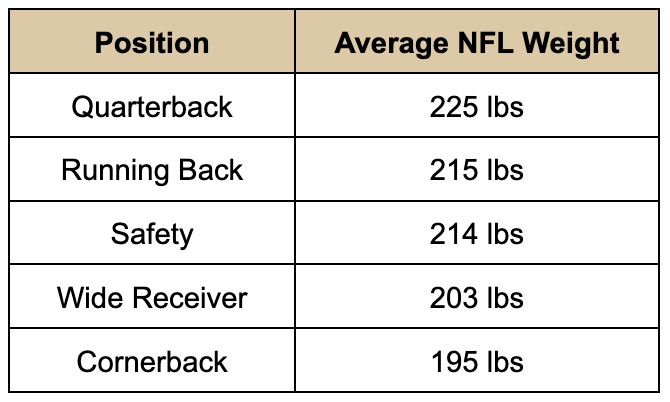
Instead of having biceps on top of biceps, soccer players are leaner and built to withstand running 6.5 miles in a 90-minute game. If you watched the David Beckham documentary on Netflix, you may recall that Beckham was quite the hot commodity off the field. With all the photo shoots he was involved in, he started to bulk up a little for the cameras.
During this time, he also had spells where he didn’t perform as well on the field. Right or wrong, some speculated that his performance dipped because he had gained too much muscle weight.
It would be insincere of me to not note that there is a soccer player who could pass for a football player. At 5' 10", 190 lbs, Adama Traoré is almost identical to Tyreek Hill’s 5' 10", 185 lb frame. Traoré has been a bit of a journeyman during his career. He started off at Barcelona before bouncing around clubs in England. He is a serviceable winger but is far from anyone’s top 50 wingers in the world list.
Despite Traoré’s size, he has famously said he doesn’t lift weights and that his bulk is mainly genetics. Though his statement is likely a bit of a white lie, a video of him training surfaced in which he was primarily using resistance bands and his own body weight. If we accept his statement at face value, one could conclude that he’s conscious of not bulking up too much to preserve his stamina and agility.
Vision & Discipline
The last skills I want to touch on are vision and discipline on the field. Messi is known for his exceptional vision on the field. He can read a defense, keep his head on a swivel, and slice opponents open with a single pass through the most unimaginable angles.
During the first few minutes of a game, he is famous for walking around and even standing still to study his opponent’s tactics and tendencies. Once he understands his opponents, he puts himself in the perfect position to create scoring opportunities.
On the opposite side of the ball, staying disciplined is a skill the best defenders employ. When defending a team, you want to make sure your team is working as a cohesive unit. If one player is out of place, everyone is punished.
One mistake can lead to a goal and a 1-0 loss. In many instances, this means not running all over the place. Staying put, defending your space, and closing out opponents when necessary is often the best way to reduce mistakes.
These are skills that can be learned, but it emphasizes the point that the top 1% in a vertical leap drill, or the number of times one can bench press 225 lbs, doesn’t give a player an advantage. Do physical attributes help? For sure. But not nearly as much as it does in America’s most popular sports.
America’s Best Athletes
So, back to the original question. What would happen if our best athletes from other sports grew up playing soccer and were sent to [insert major tournament here]?
No doubt, some of them would be good enough to represent the US at major tournaments. It would increase the player pool and make player selection more competitive. However, it’s still likely the same outcome we’re accustomed to would happen. Additionally, the athletes we would send probably wouldn’t look much different than they do now.
Hypothetically, if Russell Westbrook, DK Metcalf, or De’Aaron Fox decided to pick soccer instead of their respective sports, would they be world-class? Maybe, but who knows.
In all likelihood, they would be one of the thousands of kids who play the sport and eventually don’t make it because their insane abilities on the basketball court and football field don’t necessarily translate to being a great soccer player.
Odell Beckham Jr. was called up to try out for the US Youth National Soccer Team when he was 14. He ultimately decided to focus on football because it was his first love and he wasn’t ready to make the commitment to move away from family at that young age. He could have been something special on the soccer field. Or he could have fizzled out like so many others given the same opportunity. We’ll never know.
The real shame is that the infrastructure wasn’t in place for him to continue playing soccer at a high level without leaving his family (which is probably the main problem with the US failing to be a soccer power rather than the pool of athletes to choose from).
We often think of the Jokić’s and the Sabathia’s of the world as the exception. As Americans, it’s hard to comprehend that you don’t have to be the tallest, fastest, or strongest to be the best at a sport. Even when writing this I sometimes second-guessed myself. And that’s because in our world, the popular American sports, namely football and basketball, give huge advantages to taller, faster, and stronger humans. In reality, though, athletes in different sports are built differently—and speculating based on perceptions of what makes an athlete elite is futile.


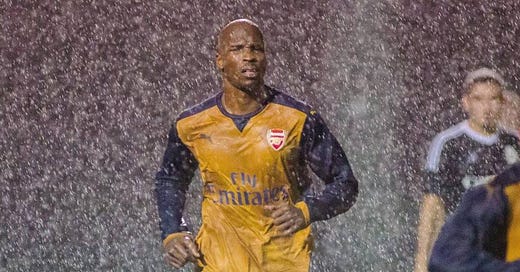



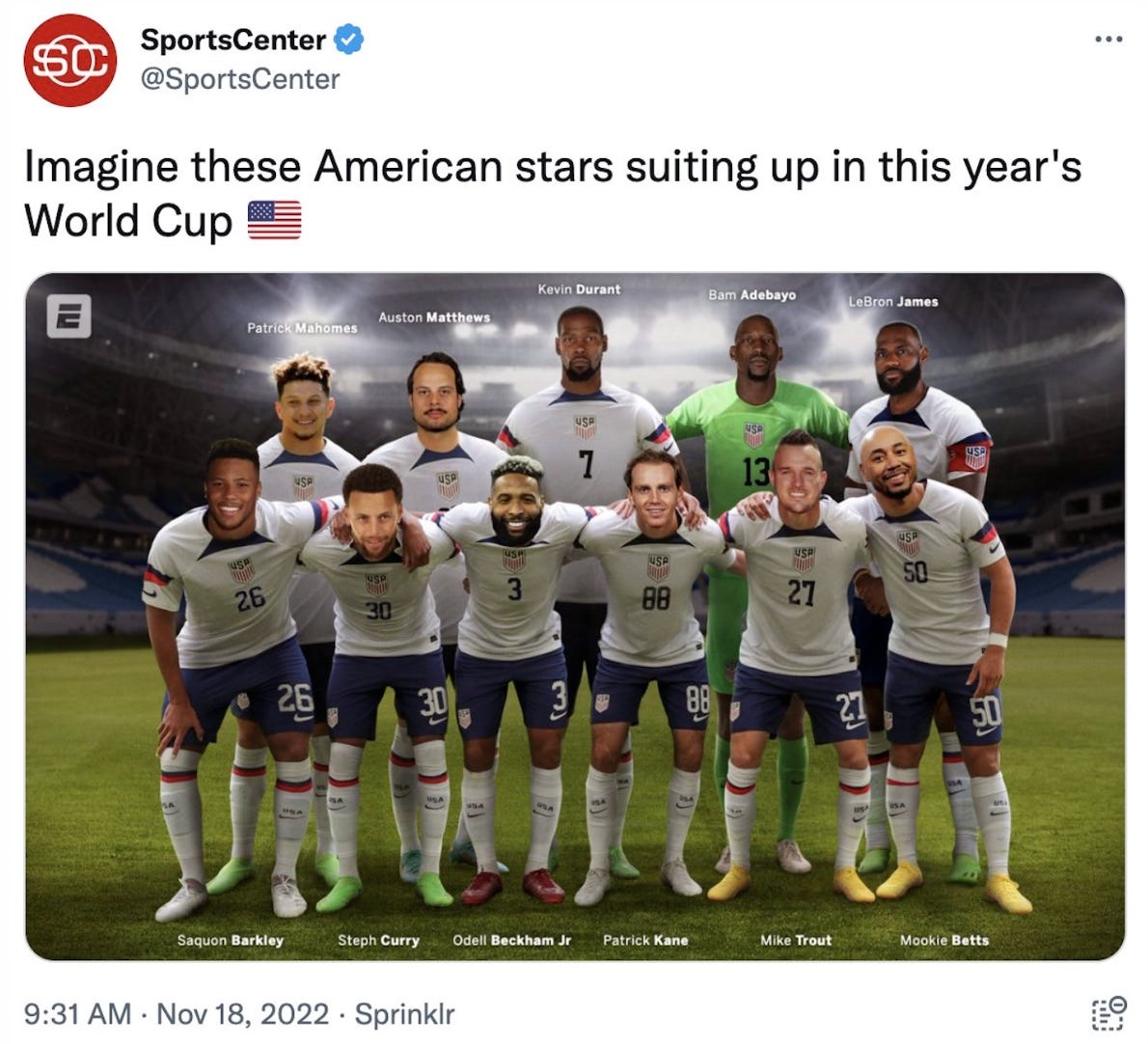
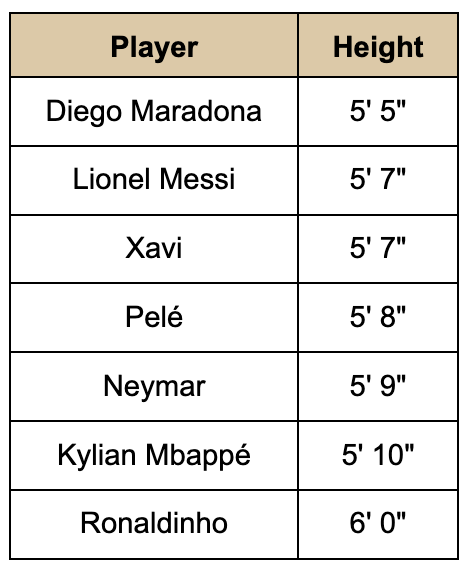
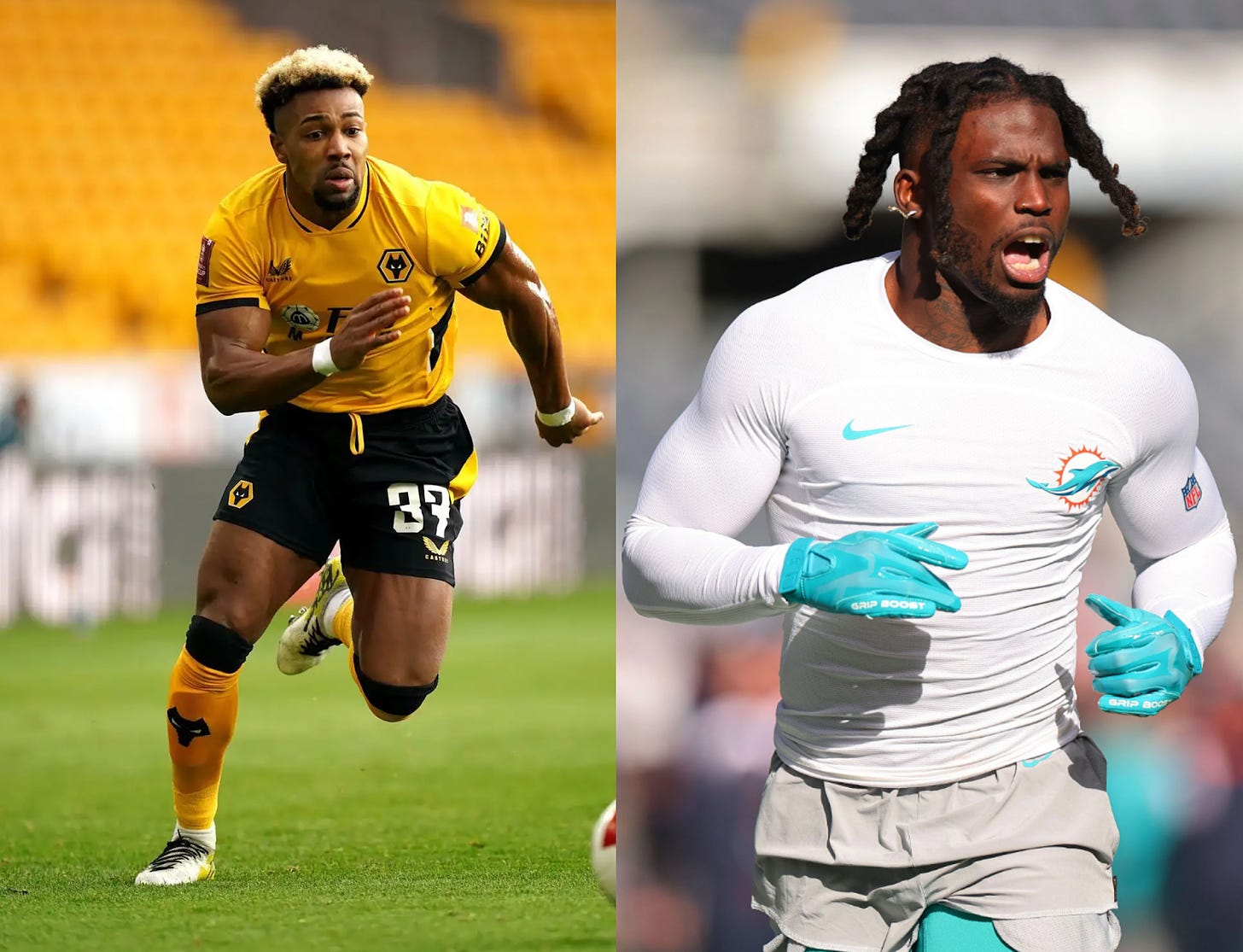
I will refer anyone who makes that argument to this excellent article.
If we are talking athletes built for soccer, I'd, as a biased mavs fan, like to throw Kyrie Irvings name into the hat. Great article btw